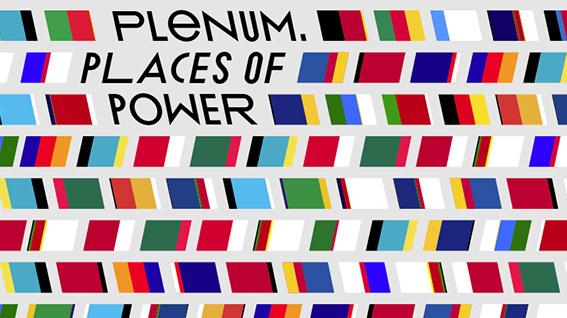
Credibility and the web
Trust me!
tags
meta
- Length900 words
- Reading Time3 min
- Create
Engineer
Advise30%
30%
60%
t.o.c.

On the internet, nobody knows you’re a dog.
On the web, delusion and disguise are masterly performed and can be difficult for users to evaluate which source is reliable. How credible is the Web after all?
On the web, delusion and disguise are masterly performed and can be difficult for users to evaluate which source is reliable. How credible is the Web after all?
If you have a web site, it makes your small business look big.
- Natalie Sequera, spokesperson of the Claris Corporation in Santa Clara
Well, well. A simple and powerful self-presentation on the web is in fact just that easy. So why is there still such a big deal around the topic of digital credibility after all? Is the sheer presence on the Internet not enough to market ourselves and our product in each and every way one desires?
From UGC and real brands
After all it is not as easy as you think. Through the democratizing idea behind the achievement called the “Internet” everyone has the chance to stage valuable and substantial content and make it accessible to the public. The same is applicable for – carefully expressed – less editorially and audited content. UGC most definitely has the potential to be perceived as high-class artistic creations; brands fan pages can take on professionalism, which is in no way inferior to the original brands’ appearances. Or, to put it in a nutshell like cartoonist Peter Steiner once did in his famous comic strips: “On the internet, nobody knows you’re a dog.”
Brands have acquired a well-established image and have gained credibility in the real world, yet have by no means an easy guarantee to transfer these values into the virtual world. In particular, the beginning and the ever- increasing relevance of social media for companies have lead to a large authenticity struggle. Users tend to be far more critical, more emancipated and increasingly difficult to reach due to their self-determination of contracts and dialog partners. The average Internet user compares, verifies, and searches for distinct information that is most appealing to him – be it during research for a specific company or for the search of the most beautiful pair of jeans. So, how does a company establish that?
An exaggerated amount of self-praise and aggressive advertising often implies the activation of a defense mechanism. Communication on the web is not about selling your image or a product anymore; rather it is about establishing a relationship with the customer. This exactly, is where the web has an advantage on classic media: the monolog situation has transformed into a dialog of openness, therefore praise and blame can be communicated directly.
Credibility goes digital
This form of authenticity, generated through social media and other websites, can be transferred to other channels via integrated marketing as well as advertising measures. If the image that is strengthened in this manner is consistent for all platforms, then the company is able to transfer the separately generated image aspects to a holistic brand image and emerge as a credible digital organism.
Four principles are to be considered:
- 1. Honesty. Always.
- 2. Self-confidence in moderation
- 3. Value and benefits
- 4. Professionalism at all levels
As a company you owe your customers sincerity and truthfulness. Despite your customers’ full awareness of wanting to acquire him as a loyal customer, he trusts the reliability behind the data you provide. The significance and availability of rating platforms, review sites, and complaint forums present today, cause for hardly any flaws to be hidden from the public. Admit your mistakes and do not try and deny them, since after all, this opens a chance to provide decent explanations and justifications for improvements.
Always be proud and confident of your accomplishments and communicate your strengths in a reasonable manner. Spare the self-praise and self-worship; rather convince your customers of your established achievements and not with only your appearances. Through this you inevitably create a positive image in your customer’s mind. A clear performance with a unique name, logo, and style embeds your company in ones memory and supports you with a particular identity.
Optimal communicators of performance and competencies are considered to be received awards or qualitative press reports. If applicable, you can also set scientific publications or specially published contributions in professional digital media.
The positive impact of communicating accomplishments and strengths is explained. Yet, those statements should hardly ever focus excessively on the company, rather it should be focused primarily on the customer. It is not about the company’s sales rather it is about the customer’s gain. Changing the perspective is a good option to reveal your company’s answer to the question: “How do I as a client benefit from that?”
Everyone can do a little bit of Internet – yet only a few can do it in a professional way. All the more important is to appear credible by providing accuracy and correctness across-the-board. How would you react to Prada’s website if it would consist of spelling errors and format mistakes? Orthographic and grammatical correctness are essential and fundamental conditions, which shouldn’t have to be raised. Instabilities in the choice of fonts, colors, or layouts can also be hindering to the eye of a customer. This instability can lead customers to transfer to other site’s and cause them to end up on the website of various competitors.
A complete website includes metadata, which must be formulated precisely and in a meaningful manner. These pieces of data are the ones who give Google-search decisive information on whether a customer clicks on your website in the search results or dismisses it as irrelevant.
Digital credibility sets the foundation for successful brands and a company’s communication on the web. Without this credibility there is a lack of trust, without credibility there is no persuasion, without credibility there is no communication. If customers do not want to communicate with you, then they won't. Period.
Too long; didn't read
The digital world is open to everyone equally. How then can one check a website for its authenticity? Even brands that work hard for their solid image in the real world have to find new approaches to reach out to their clients and convince them. Four key principles lead to the direction of promising a path to follow:
- Honesty. Always.
- Self-confidence in moderation
- Added Value and benefits
- Professionalism at all levels
Related Articles
Washed Green
The Greenwashing Business
The awareness of both sustainability and ecological efforts has become more and more of a central aspect regarding appropriate corporate management. However, cheating within these efforts for the benefit of having a positive reputation can also put a lot into question.
Places of Power
Biennale di Venezia
Architecture between the poles of democracy and non-democracy. The visualization and staging of arenas of power - from parliaments to social media.
[ knowledge database | online | advise ]
advise
Finding new approaches
We practice what we preach. kalbeck.media provides comprehensive support in the search for successful solutions between both the poles of trend and the ones of tradition.




